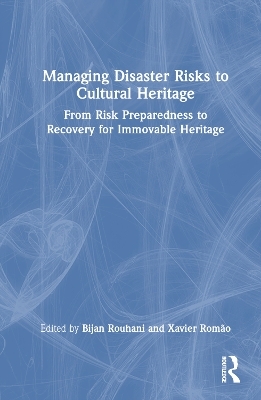
Managing Disaster Risks to Cultural Heritage
Routledge (Verlag)
978-1-032-20458-1 (ISBN)
Featuring contributions from academics and practitioners from around the globe, the book presents a comprehensive view of the scholarship relating to cultural heritage, disaster risk preparedness, and post-disaster recovery. Particular attention is given to the complex and dynamic nature of disaster risks and how they evolve during different phases of a catastrophic event, especially as hazards can create secondary effects that have greater impacts on cultural heritage, infrastructure, and economy. Arguing that risk preparedness and mitigation have historically been secondary to reactive emergency and first aid response, the book demonstrates that preparedness plans based on sound risk assessments can prevent hazards from becoming disasters. Emphasising that the protection of cultural heritage through preparedness, mitigation actions, and risk adaptation measures – especially for climate change – can contribute to the resilience of societies, the book highlights the vital role of communities in such activities.
Managing Disaster Risks to Cultural Heritage will be useful to students, professionals, and scholars studying and working with cultural heritage protection. It will be of particular interest to those working in the fields of Cultural Heritage, Archaeology, Conservation and Preservation, Sustainable Development, and Disaster Studies.
Bijan Rouhani, PhD, is a senior researcher of the Endangered Archaeology in the Middle East and North Africa (EAMENA) project at the School of Archaeology, University of Oxford, UK. Xavier Romão is an assistant professor at the Civil Engineering Department of the Faculty of Engineering of the University of Porto, Portugal.
Introduction; 1. Understanding Risks to Cultural Heritage: Are Disasters Natural?; 2. Disasters and Heritage Loss; 3. Stability of Cultural Information in Unstable Environments: Data Management for Digital Preservation of Immovable Cultural Heritage against Natural Hazards; 4. Disaster Risk Assessment Strategies for Cultural Heritage; 5. From Risk Reduction to Risk Adaptation: Protecting the Past for the Future; 6. Remote Sensing and Disaster Risk Management for Cultural Heritage; 7. Can Our Past Save Our Future? Traditional Knowledge and Disaster Risk Management for Cultural Heritage; 8. Emergency Response to Cultural Heritage; 9. Cultural Heritage Recovery and Reconstruction; 10. Surviving Disasters: Traditional Disaster-Resilient Designs in Japan;11. A Case Study from the World Heritage Site of the Tabriz Historic Bazaar and Fire Management, Iran; 12. Winds, Rain and Thunder: Hurricanes, Community Support, and Preparedness at Teyuna-Ciudad Perdida Archaeological Park, Colombia, a Case Study; 13. Counting the Cost: Architectural Heritage in Post-Quake Christchurch, 2010 – 2020; 14. A Multilevel Framework for Flood Risk Assessment of Cultural Heritage: A Case Study from Portugal; 15. Leveraging Digital Systems for Disaster Management at the UNESCO World Heritage Site of Bagan Archaeological Zone in Myanmar; Conclusion.
| Erscheinungsdatum | 17.11.2023 |
|---|---|
| Zusatzinfo | 3 Tables, black and white; 14 Halftones, black and white; 14 Illustrations, black and white |
| Verlagsort | London |
| Sprache | englisch |
| Maße | 156 x 234 mm |
| Gewicht | 740 g |
| Themenwelt | Reisen ► Reiseführer |
| Naturwissenschaften ► Geowissenschaften ► Geologie | |
| Wirtschaft | |
| ISBN-10 | 1-032-20458-3 / 1032204583 |
| ISBN-13 | 978-1-032-20458-1 / 9781032204581 |
| Zustand | Neuware |
| Haben Sie eine Frage zum Produkt? |
aus dem Bereich


